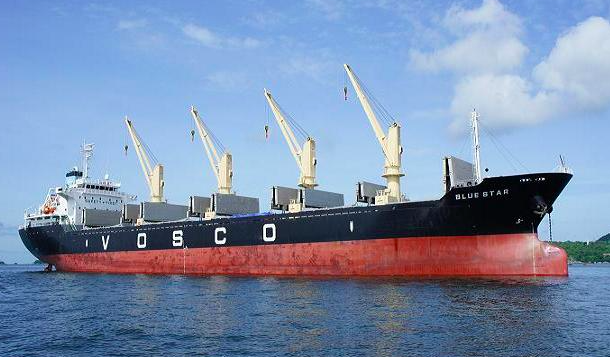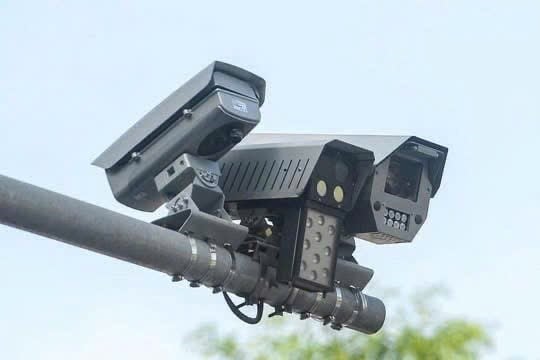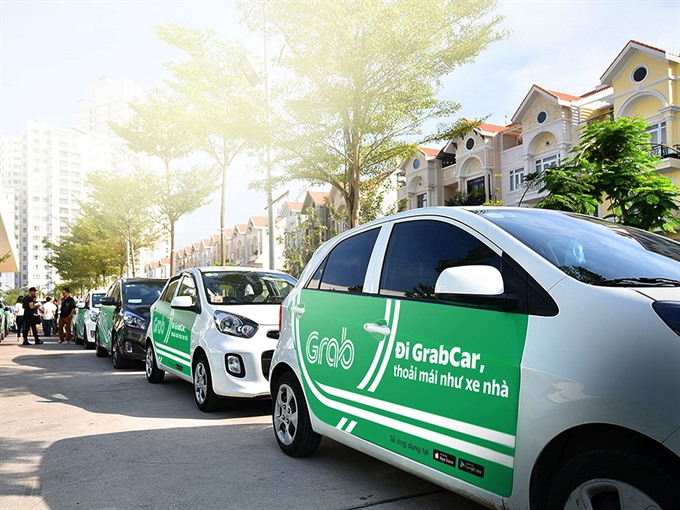 Economy
Economy

" />Price competition between traditional taxis and ride hailing companies like Grab and Uber has become fierce, but it is mostly the drivers on both sides who are suffering the biggest losses.
 |
| Grab taxis wait for customers at Nam Trung Yên Urban Area in Hà Nội - VNA/VNS Photo Hoàng Hà |
HCM City – Price competition between traditional taxis and ride hailing companies like Grab and Uber has become fierce, but it is mostly the drivers on both sides who are suffering the biggest losses.
Grab and Uber continue to offer huge discounts to passengers to grab market share from traditional taxis.
They are 25 – 50 per cent cheaper than traditional taxis, and passengers are informed before the ride how much it will cost them.
“Grab and Uber have changed the public transport market,” Lê Trọng Thành, a traditional taxi driver, said.
“Traditional taxis have to follow many regulations and pay lots of fees, but not Grab and Uber.”
Đào Văn Long, another traditional taxi driver, said, “With their current prices, Grab and Uber put up with losses to eliminate traditional taxis.”
Under intense price pressure from Grab and Uber, many traditional taxi companies have also changed their policies. Like Uber and Grab, traditional taxi companies now rent out their taxis instead of signing labour contracts with their drivers. The drivers thus lose their benefits like social and health insurance.
Vinasun, one of the biggest taxi companies, has recently signed contracts renting its cars to drivers.
“I’ve just re-signed a contract with Vinasun,” Nguyễn Hùng Tuấn said, worried.
“From now on every day I have to pay VNĐ800,000 (US$35) to the company.”
He revealed that if drivers rent the cars before May they would get VNĐ100,000 ($4.5) per day in support from company.
“Vinasun’s turnover has reduced by 30 per cent because Grab and Uber undercut its prices,” Tạ Long Hỷ, director of Vinasun, told Tuổi Trẻ (Youth) newspaper.
He revealed that his drivers’ incomes have also fallen by 30 per cent and now they only earn VNĐ5 – 6 million ($220-250) a month.
“Twenty per cent of our drivers have quit.”
Another major taxi company, Mai Linh, encourages drivers to buy a new car and run it under the company’s colours.
“All these have put pressure on drivers, and customers are benefiting,” Nguyễn Thanh Hưng, a traditional taxi driver, said.
“Taxi drivers will not be able to buy accident insurance.”
With the financial pressure of renting their taxi, drivers have less time to rest and this could cause more accidents, he said.
Ride hailing drivers too face risk
The number of cars signing up with Grab and Uber has increased sharply, causing a severe loss of income for drivers.
When Grab and Uber first came, many people borrowed money from banks to buy cars and sign up with them. In the beginning they could earn VNĐ20 – 30 million a month ($900-1,200), but incomes have since gone down sharply.
Bùi Tấn Cao quit his job at a construction company a year ago, borrowed VNĐ300 million ($13,300) from a bank, and signed up with Uber.
A year later his income has fallen 30 per cent to around VNĐ800,000 ($35) a day because there are too many Grab and Uber cars.
Cao drives for both Grab and Uber to make a living.
Nguyễn Phương, owner of a transportation company in District 2, is worrying about his 12 cars which used to run for the two ride hailing companies.
Last year he sold his two trucks, borrowed some money from a bank and also persuaded some friends, which added up to 12 cars. In the first few months he could earn VNĐ30-40 million ($1,200 - 1,800) a month, but sine then his income has fallen and 40 per cent of the drivers have quit. Now he rents out his cars for VNĐ400,000 – 800,000 ($17 -35) a day, yet only four of them are running. The other eight remain in the garage.
“I drive 16 hours a day and only earn VNĐ300,000 ($12) a day after expenses,” Nguyễn Minh Phong, a Grab driver, said.
Public transportation pressure
It is undeniable that Grab and Uber have benefited customers, but they have also contributed to worsening traffic by having many cars operating on the streets.
“The severe traffic congestion around Tân Sơn Nhất airport is partly caused by Grab and Uber cars, many of which cruise around to wait for customers,” a Southern Airport Authority official said.
Tạ Long Hỷ, director of Vinasun and chairman of the HCM City Taxi Association, demanded equal treatment for traditional taxi and ride hailing companies.
He said since 2010 only 11,000 taxis were licensed in HCM City, but now it allowed 20,000 cars to be operated by Grab and Uber.
Đỗ Quốc Bình, chairman of the Hà Nội Taxi Association, made a similar point.
Economist Ngô Trí Long said: “This is an opportunity to create a fair business environment for taxis.”
Grab has been licensed on a trial basis for two years in five cities and provinces -- Hà Nội, HCM City, Đà Nẵng, Quảng Ninh, and Khánh Hòa.
Uber was allowed to operate on a trial basis by the Ministry of Transport but the company has yet to complete incorporation procedures and is now operating "illegally". -- VNS